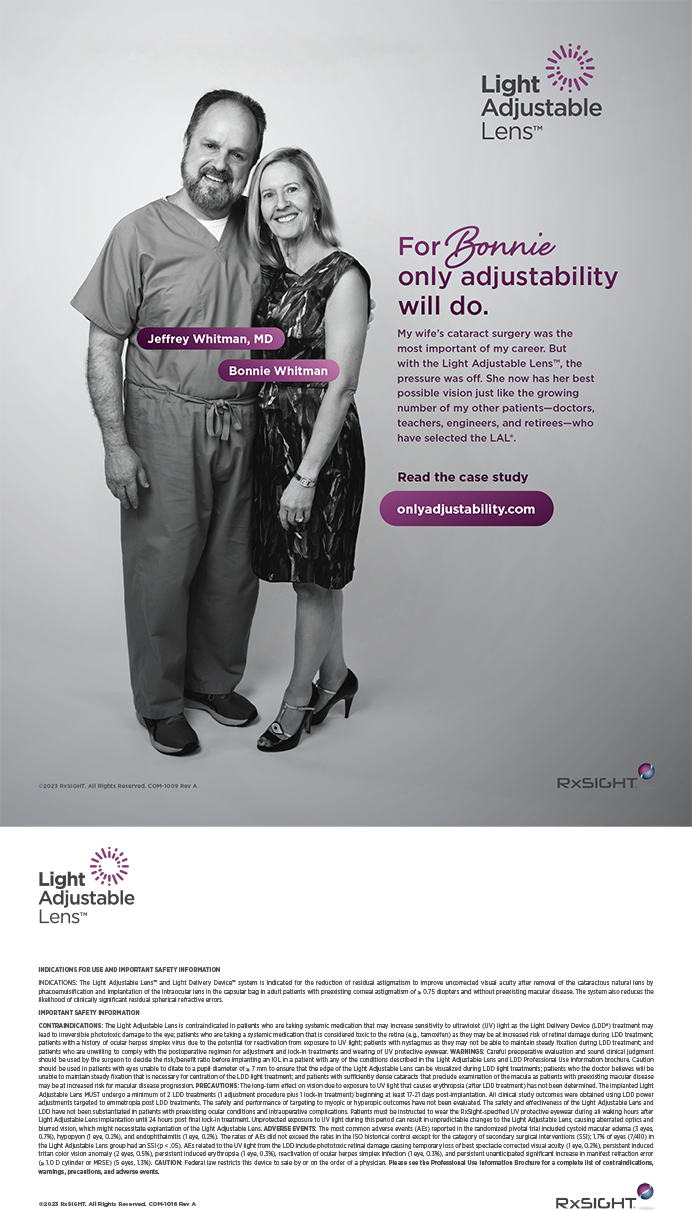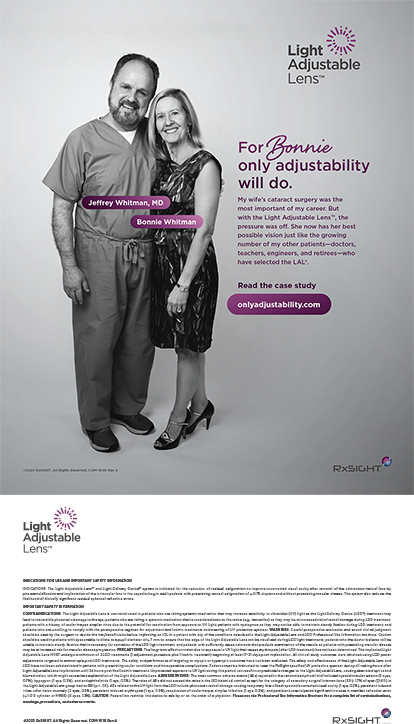When you treat patients with presbyopia, how do you determine when to use a sclera-based solution, a cornea-based solution, or a lens-based solution? In your opinion, what is the potential for pharmacologic solutions to presbyopia correction?

Brett L. Fisher, MD
Medical Director, Eye Center of North Florida
"I don’t have any direct experience with sclera-based solutions, and that’s not something I currently offer my patients. I am interested in laser scleral microporation, though, and I believe it is a promising treatment for presbyopia that has great potential. In terms of cornea-based solutions, I’m currently offering the Kamra corneal inlay (CorneaGen), as well as traditional monovision and modified monovision with LASIK in my practice. Many patients who do well with monovision contact lenses or multifocal contact lenses can wait on surgical interventions, as our treatments for presbyopia are rapidly evolving.
For symptomatic patients with presbyopia with clear crystalline lenses who wish to minimize their use of spectacles or contact lenses, especially those in the 40-to-50-year age group, I find that a corneal solution is often most appropriate. Prior to surgery, we simulate different degrees of monovision, as well as vision with the pinhole aperture optics of the Kamra corneal inlay in the nondominant eye, so that patients have an idea of what their vision will be like after the procedure. The simulations also allow us to better determine who will be a good candidate for these surgeries.
For patients older than 50, especially those with any degree of early cataract, I favor a lens-based solution now that the AcrySof IQ PanOptix Trifocal IOL (Alcon) is available. This lens allows me to achieve consistently good vision over the entire visual range for my patients, with an acceptable risk and side-effect profile.
Pharmacologic approaches to treating presbyopia are also interesting and may allow us to delay the need for spectacles, contact lenses, or surgical procedures in early presbyopes. Topical drops that cause miosis of the pupil of one or both eyes appear to be fairly safe and reasonably effective, and they have the advantage of being reversible. Another topical eye drop in development contains a drug that reduces disulfide bonds between lens proteins in the crystalline lens, seeking to reverse the age-related stiffening of the natural lens. This treatment appears to be effective and long-lasting in early studies, and there is a possibility this same compound could be used to prevent or delay the development of nuclear sclerotic cataracts.

Michael Gordon, MD
Partner, Gordon Schanzlin New Vision Institute, a TLC Center, La Jolla, California
"In the United States, we are limited in certain technologies that do not have FDA approval. As such, we have no scleral approach to presbyopia. Young presbyopes and most older individuals do well with modified monovision, with up to about -1.00 D in the nondominant eye. Presbyopic LASIK, which is essentially adjusting corneal asphericity, is limited due to flexibility in the optical zone and software. Corneal inlays, of which only the Kamra is still available, is a very small (almost nonexistent) market. With better multifocal lens technology, presbyopes—particularly hyperopic presbyopes—are being offered this technology at younger ages (now patients in their 50s). Pharmacologic solutions, even if only for a bridging solution, have huge potential.

Colman R. Kraff, MD
Kraff Eye Institute, Chicago
"Patients seeking a solution to presbyopia are highly motivated to get rid of their reading glasses. They want a predictable solution with high-quality acuity. I only offer cornea-based (LASIK or PRK monovision) and lens-based options. I don’t have a set protocol for which option to offer patients. In general, however, for patients who are in their late 50s or early 60s with or without clinically significant cataracts, I gear my discussion toward lens-based choices (trifocal or extended depth of focus lenses with mini-monovision). In younger patients with presbyopia, my discussion leans heavily toward LASIK or PRK monovision options. I always have this subgroup do a short trial of monovision with contact lenses so they can experience the world through monovision.
The potential for a pharmacologic solution to presbyopia is huge. Over the past several years, I’ve performed an informal poll of all my patients who have had LASIK and who are now becoming presbyopic and seeking a presbyopic solution. I ask them the following question: “What would you think of having an eye drop that would potentially give you several hours of reading acuity a day and that doesn’t compromise your distance vision?” The responses are overwhelmingly positive, typically something like, “What a great idea! Where can I get the drops?” or, “Are they available now?”

James Wolffsohn, BSc, MBA, PhD
Ophthalmic Research Group, Aston University, Birmingham, England
"Presbyopia correction is based on visual needs rather than type of solution chosen. Once I know the visual needs of a patient and their preferred form of optical correction, I consider which design—multifocal profile, monovision, etc— and what add powers to start with and refine from there.
Until recently, the prospects for pharmaceutical solutions to presbyopia were not promising. However, two major pharmaceutical companies are bringing topical eye drops with interesting pilot data to clinical trials, so we could see an approved product in the next 5 years. It is unlikely to negate presbyopia fully, but it could reduce the effects of presbyopia and delay the time that a near optical correction is required.”




